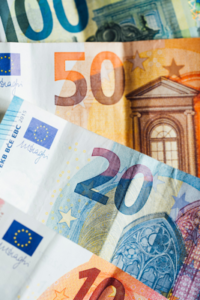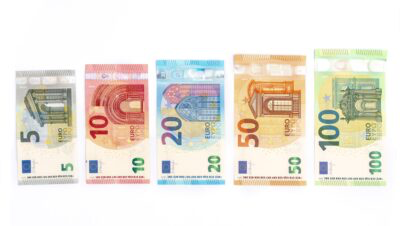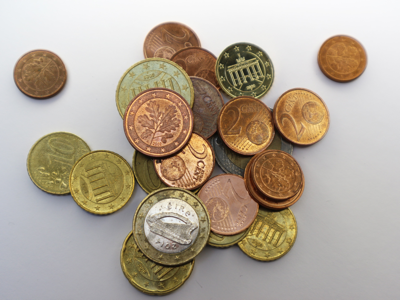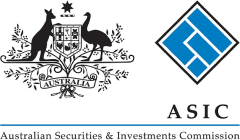Currency in Europe
A Travel Money Guide to Europe
Travelling to Europe is considered a 'right of passage' by many Australians. In fact it is one of the most popular places to travel to from Australia. With countries like France, Germany, Italy and Spain there is no shortage of fabulous things to see, eat and experience.
To make your savings go even further, read our easy to read guide on currency in Europe. This guide helps you with the following:
- The official currency of Europe
- The pros and cons of using a bank card in Europe
- What the Euro looks like
- The average costs of things in Euro
- Euro currency converter
- What to do with leftover euros
- How to exchange the currency in Europe
- Some hot tips to help you save money
- How to buy Euro before you leave
What Currency is Used in Europe?
The official currency of Europe is the Euro. The currency sign for the Euro is €, while the code is EUR. 19 countries within European Union (EU) use the Euro, they are: Austria, Belgium, Cyprus, Estonia, Finland, France, Germany, Greece, Ireland, Italy, Latvia, Lithuania, Luxembourg, Malta, The Netherlands, Portugal, Slovakia, Slovenia and Spain.
In Europe, it’s more common to see the symbol written after the numeral, as in 10€. The Euro is the second most traded currency on the world’s foreign exchange markets, the euro is issued by the European Central Bank.
Euro banknotes have 7 denominations: €5, €10, €20, €50, €100, €200 and €500.
The Euro has 8 coin denominations: €2, €1, 50cent, 20cent, 10cent, 5cent, 2cent and 1cent.

What Does the Euro Look Like

First things first, there’s technically no such thing as a ‘country specific’ euro. While each country mints its own coins with a national design on one side, these coins can be used everywhere in the eurozone.
And vice versa: any coins minted with national designs from other eurozone countries can be used in all countries of the Eurozone.
Euro coins come in the standard eight denominations: one cent, two cents, five cents, ten cents, 20 cents, 50 cents, €1, and €2.
The ‘common’ side of the coin used across the eurozone features the numerical value of the coin and a map of the European Union.
On the reverse ‘national’ side, all coins bear the same design – although this design has been modified a number of times since countries have adopted the euro.
Euro banknotes come in denominations of €5, €10, €20, €50, €100, €200, and €500. The designs are the same throughout the eurozone with different sizes and colours denoting the different bill values.
You’re unlikely to come across a €500 note but it’s a good idea to avoid even the €100 and €200 bills as some merchants are reluctant to accept these higher denominations.

Leftover Euros at the End of Your Trip? What to Do with That Unused Cash

It’s annoying returning from a trip with a wad of foreign cash but there are plenty of ways to dispose of these unwanted coins and notes:
- Your airline might distribute envelopes for currency collection to donate to charities (check out Qantas’s Change for Good program with UNICEF).
- Australian international airports often have collection boxes for unwanted currency, which is donated to charity.
- Drop off your currency at any branch of the Commonwealth Bank of Australia, which then gives every cent to UNICEF.
- Change your currency either at the airport or, better yet, with a money changer in the city.
- Why not hold onto those euros for a friend just heading off? It’ll be a lovely surprise and going away gift for them!
- Keep your money for later trips to Europe. The euro is the official legal currency of 19 eurozone countries and accepted by many more.
7 Travel Money Tips for Trips to Europe
Many tourists waste money through not finding the best ways to exchange their currency.
To help you avoid this predicament, here are a few practical tips to help you get the most bang for your … euro:
- Avoid the airports! Currency exchange bureaus at the airport charge epic fees. If you like a good deal – or even just a reasonable one – avoid these at all costs. Look for other ways to take money to Europe that are much cheaper.
- Only carry what you need – It can be expensive to change euros back into AUDs so only take what you think you’ll spend. Not only this – nobody likes to tuck wads of notes into their socks and toiletries for safekeeping on longer journeys.
- Ask for a mix of denominations – Make it easy on yourself and the vendors by getting a mix of smaller notes.
- Check your exchange rate – Google and XE.com are the standard market exchange rate but you’ll notice how wildly bank and currency exchanges can vary their rates. Try to get as close to the market rate as possible.
- Look out for hidden fees – The bane of our (financial) existence, hidden fees will often make a huge difference to the cost of your holiday. Be particularly wary of hidden bank fees for overseas card usage.
- The right card makes all the difference – Having a card is convenient but it can take a hit to the bank account if you have the wrong card. Research and arm yourself with the best card for travel for big savings.
- Mix it up! Many travellers only use their credit card while some only think about cash. But the best option depends on your situation. Save the card for huge purchases such as hotels and car hire and reserve your cash for smaller wins – transport, attractions, or meals out.



